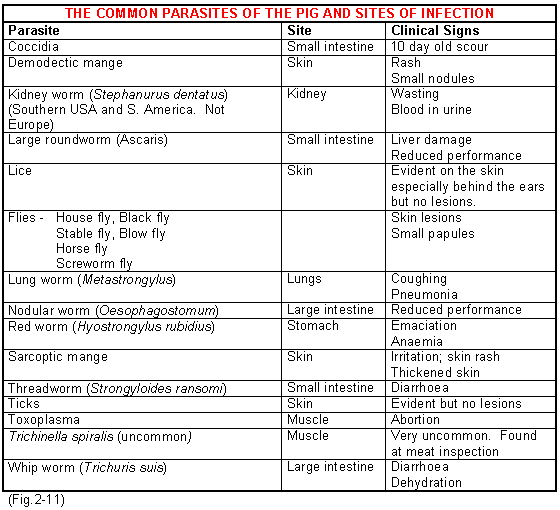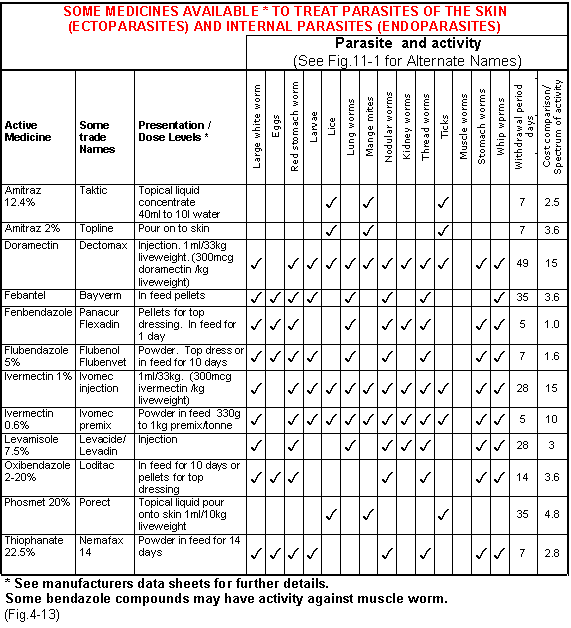



Parasites
Parasites are organisms that either live in the body (internal parasites or endoparasites) or externally on or in the skin (ectoparasites). The smallest of the pathogenic parasites coccidia, are found in the intestine. They invade and live in the lining of the small intestine. The major parasites of the pig are listed in Fig.2-11.
Parasites unlike bacteria have a life cycle which is the process of development from the egg through larval stages and finally to the adult. Some parasites require an intermediate host, for example the earth worm is the intermediate host in the life cycle of the lung worm. This type of cycle is called an indirect one. A knowledge of the life cycle is important in preventing diseases. The most effective and cheapest way of controlling parasites is to break the cycle either by good hygiene or by removing the intermediate host if there is one.

Medicines to control parasite infections act variously on the adult worm, the egg or the larva.
Fig.4-13 shows the medicines available and the methods of application. Medication can be given by mouth in the water or feed, by injection or on the skin.







